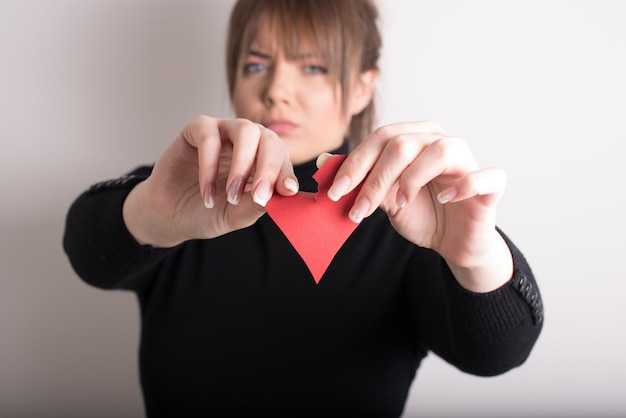Men — a fair warning: at some point in a healthy relationship your partner will approach you from a place of vulnerability, asking or hinting that they need something. Here’s what not to do. Your first thought might be, “If you showed me more affection, I’d be more willing to respond in kind.” That reaction is harmful. She was simply describing what makes her feel loved and valued; she wasn’t labeling you a failure or deliberately trying to shame you. If your instinct is to fire off excuses — “You know how busy I am,” “Life is so stressful right now,” “You’re never satisfied, always finding something to complain about” — that approach will only damage the connection. Sure, those defensive responses can be unpacked later, but the immediate effect is destructive.
Assuming she wasn’t being disrespectful or abusive, when she brings something up she’s handing you crucial information about how she experiences closeness with the person she loves and wants a great relationship with. Instantly dismissing or invalidating her feelings transforms the moment into an us-versus-them battle. It becomes a round of “Maybe you don’t get what you need because you aren’t giving me what I need,” which is not the time to unload all the resentments you’ve been hoarding. Waiting to retaliate with your own long list of grievances under the cover of “honesty” isn’t vulnerability — it’s an ambush. And men who take pride in solving problems often feel especially triggered; when a partner expresses a desire for change, it can sound like, “Our relationship is broken and you’re the cause,” even when that isn’t the reality.
So start by grounding yourself. Decide to be a safe place for her to share what matters. Allow the uncomfortable silence. Pause before speaking. Check in with your own sensations: are you tense, under pressure, going numb, retreating inward? Are you interpreting her words as an attack? That’s likely just a narrative you’re telling yourself. Then lead with curiosity. Ask open, inviting questions: “Can you tell me more about how that made you feel?” Practice saying that aloud — it’s simple but powerful. If you want to go a step further, try something like: “It sounds like you’ve been feeling kind of lonely — would that be accurate?” These kinds of prompts can’t be answered with a yes or no; they encourage expansion and true vulnerability.
When a partner opens up, that should be met with appreciation and encouragement. If both people don’t feel safe to share what’s happening inside and receive kindness, curiosity, understanding, and validation in return, the relationship won’t be sustainable. Think about how much more constructive the exchange becomes when you resist feeling attacked, stop defending yourself, and refrain from making excuses. Yes, a partner also needs to learn how to raise concerns without criticism or passive-aggressive behavior, but a lot of progress happens when you reassure her that her emotions aren’t overwhelming to you, that you care about what’s in her heart. Validating and empathizing doesn’t require agreeing with every detail — it simply means communicating that her feelings matter to you, even when those feelings are directed at you.
Practical skills make these conversations less threatening and more productive. First, ask a clarifying question or two to understand whether she wants empathy, solutions, or both — “Do you want my thoughts or do you just want me to listen?” is a small but powerful check. Second, reflect back what you heard before you respond: “What I’m hearing is that you’ve been feeling overlooked when I’m on my phone after dinner. Is that right?” Reflecting shows you’re trying to get it right instead of defending your behavior.
Turn vague statements into specific requests. When she says she wants more affection or time together, help translate that into concrete actions: a weekly date night, fifteen minutes of undistracted conversation before bed, a hug when you come home. Agreeing on small, measurable changes makes emotional needs actionable and reduces misunderstanding. Create experiments rather than grand pronouncements — try something for two weeks, then check in and adjust.
If you feel triggered, use a respectful pause rather than an explosive reaction. Say something like, “I want to hear you, but I’m feeling overwhelmed right now. Can we take a 20-minute break and come back so I can be fully present?” That communicates both care and responsibility. Follow through by returning at the agreed time and engaging without bringing a list of retaliatory complaints.
Practice a few validating phrases until they come naturally. Examples that help de-escalate and open the conversation include: “Thank you for telling me this,” “I’m sorry you felt that way,” “I can imagine that was painful,” and “I want to understand — help me see what you need.” Use “I” statements for your own side: “I notice I shut down when I feel blamed, and I don’t want that to happen between us.” That keeps the focus on behavior and impact, not character attacks.
Recognize that follow-through is what builds trust. If you agree to a change, do it. If you miss a commitment, take responsibility quickly, apologize, and offer a plan to get back on track. Small, consistent steps matter more than one-time promises.

Finally, know the boundaries of your responsibility. Validating emotions doesn’t mean tolerating abuse or being the sole caretaker of your partner’s emotional world. If patterns of disconnection continue despite effort, consider couples therapy or individual counseling to learn communication tools and repair strategies in a guided setting. Taking professional help is not a failure — it’s a recognition you want to invest in the relationship.
Quick checklist to respond when she shares a need:
- Breathe and pause — don’t answer from the first impulse.
- Ask: “Do you want advice or just for me to listen?”
- Reflect back what you heard to confirm understanding.
- Validate the feeling without immediately fixing it.
- Ask for specifics or offer a small experiment to meet the need.
- Follow through and schedule a check-in to see how it’s going.
Learning to receive someone’s needs with openness is a skill that pays dividends. When you practice curiosity, validation, and concrete follow-through, you not only meet her needs — you deepen the trust and intimacy that make both partners feel safer and more connected.


 Men, is SHE allowed to have NEEDS in this Relationship?">
Men, is SHE allowed to have NEEDS in this Relationship?">

 These 12 ‘Normal’ Traits Are Actually Childhood Survival Mechanisms">
These 12 ‘Normal’ Traits Are Actually Childhood Survival Mechanisms">
 5 Signs it’s a Trauma Bond, not Love">
5 Signs it’s a Trauma Bond, not Love">
 Yes, Anger Can Be Healthy But NOT Like This (4-Video Compilation)">
Yes, Anger Can Be Healthy But NOT Like This (4-Video Compilation)">
 My First Counseling Experience. (Funny)">
My First Counseling Experience. (Funny)">
 How to Know an Avoidant Regrets Losing You Without Needing to Ask | Mel Robbins motivational">
How to Know an Avoidant Regrets Losing You Without Needing to Ask | Mel Robbins motivational">
 Why She Keeps Bothering You When You’re Working!">
Why She Keeps Bothering You When You’re Working!">
 Why ‘Managing Your Emotions’ Is Making You Feel Worse">
Why ‘Managing Your Emotions’ Is Making You Feel Worse">
 3 Ex-Avoidants REVEAL What FINALLY Made Them Change And STOP Running From Love">
3 Ex-Avoidants REVEAL What FINALLY Made Them Change And STOP Running From Love">
 My Partner Always Feels Attacked!">
My Partner Always Feels Attacked!">
 How to FIGHT so you don’t HATE each other.">
How to FIGHT so you don’t HATE each other.">